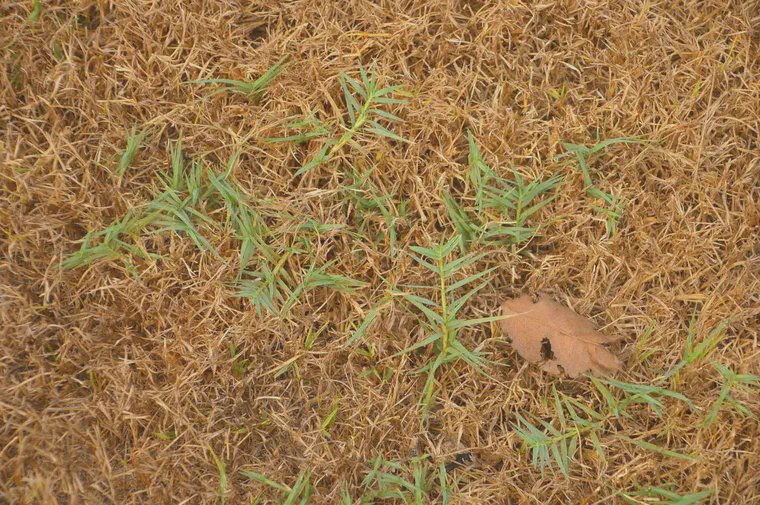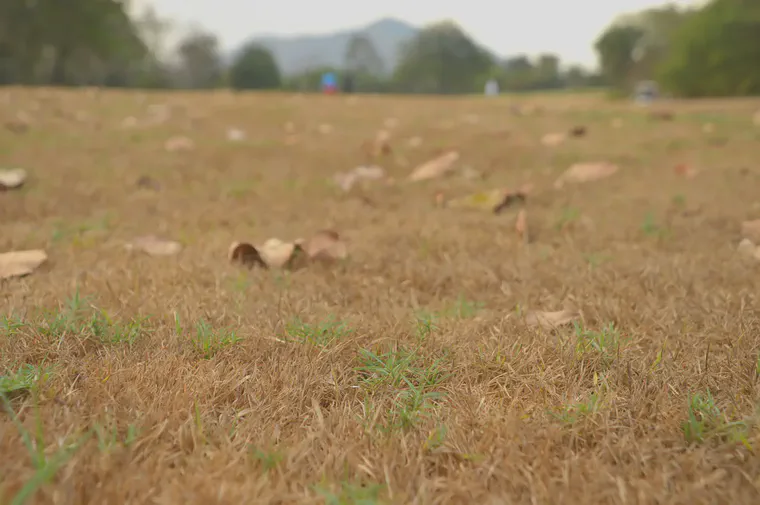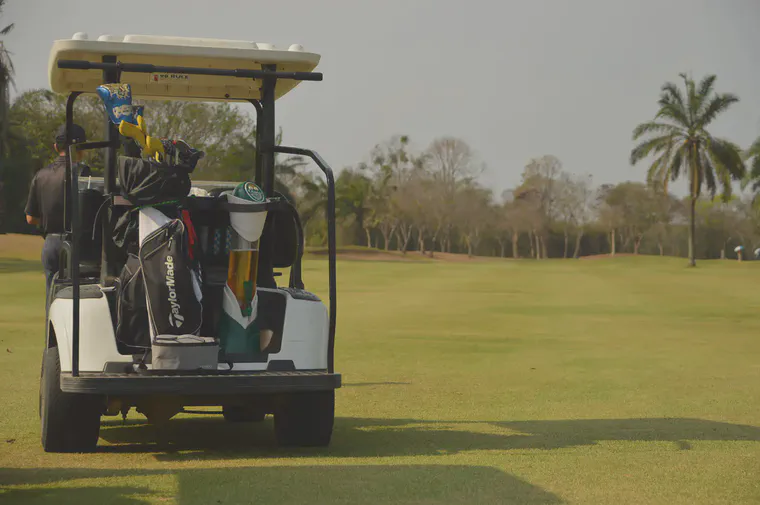Big differences between species
Yesterday I took a walk around a golf course in Chonburi, Thailand. It is three months into the dry season at this location; there has been negligible rainfall in Chonburi since the start of November.
The tees and fairways at this course have received irrigation, but the unirrigated manilagrass (Zoysia matrella) rough between tees and fairways was fully dormant. However, one can still find green and growing bermudagrass (Cynodon) plants interspersed among the dormant manilagrass.


In places with a lot of rainfall and plenty of irrigation water, this difference between bermudagrass and manilagrass isn’t a big deal. In fact, manilagrass outgrows and outperforms bermudagrass in much of East and Southeast Asia. There seem to be two reasons for this. First, there is ample annual rainfall in East Asia. Second, in East Asia there tend to be periods of high temperatures that are ideal for growth of C4 grasses coinciding with cloud cover that reduces the photosynthetically active radiation (PAR). When turfgrass is regularly mown in such conditions, manilagrass performs better than bermudagrass.

In parts of the world that don’t have much rain, and that do have plenty of PAR at the same time the temperatures are high, then bermudagrass performs better than manilagrass. This is the subject of a new article by Culpepper et al. entitled Comparison of four warm-season turfgrass species to natural rainfall or supplemental irrigation in a semiarid climate.
This research was conducted in 2017 and 2018 in Lubbock, Texas. The four grasses used were:
- ‘Celebration’ bermudagrass (Cynodon dactylon)
- ‘Zeon’ manilagrass (Zoysia matrella)
- ‘Jamur’ Japanese lawngrass (Zoysia japonica)
- ‘Legacy’ buffalograss (Buchloe dactyloides)
Grasses were grown under two conditions. One condition (supplemental irrigation) was irrigation applied to maintain growth through subsurface drip irrigation from May through October each year. A second condition (natural rainfall) was irrigation in May and June, then withholding of irrigation from July to September, and then resupply of irrigation to promote recovery from drought stress at the end of the season.
Here are a few quotes from the article:
“Japanese lawngrass and manilagrass experienced drought-induced dormancy each year. Both species recovered fully with consistent, intense rainfall in 2017, but manilagrass was unable to recover the same visual turf quality following two years of no supplemental irrigation during summer months.”
“These results provide clear evidence that bermudagrass would be best when only receiving intermittent rainfall. With the exception of manilagrass, all turfgrass species were capable of maintaining acceptable visual quality for 2 to 3 weeks without supplemental irrigation …”
“Bermudagrass NDVI [normalized difference vegetation index—used in this study as a measure of leaf firing and drought] rarely exhibited differences between supplemental irrigation and natural rainfall in both years. As noted in previous research this result demonstrates the ability of bermudagrass to maintain healthy turfgrass canopy under a range of soil moisture and environmental conditions.”
“The non-irrigated buffalograss NDVI measurements were intermediate compared to bermudagrass. Both zoysiagrass species exhibited decreased NDVI with natural rainfall in 2018 … Both species improved from week 5 to 6 with rainfall events, but recovery was slowed for manilagrass after week 8 … Bermudagrass and buffalograss provided greater NDVI measurements than either zoysiagrass species.”
“All species, other than bermudagrass, receiving only natural rainfall fell below the acceptable level of 6 by week 4 and those species required increased rainfall toward the end of the season to regain acceptable turf quality. Manilagrass started the 2018 season below acceptable levels and never recovered to acceptable turf quality. In contrast, supplemental irrigation helped maintain similar turf quality from week to week through 2018 … Reduced recovery potential from species only receiving natural rainfall may demonstrate cumulative effects from drought stress in consecutive years. The one exception was bermudagrass …”
For more about this, see: